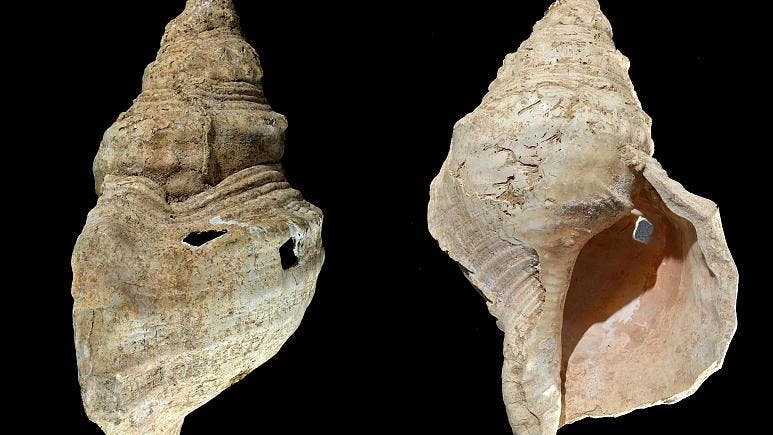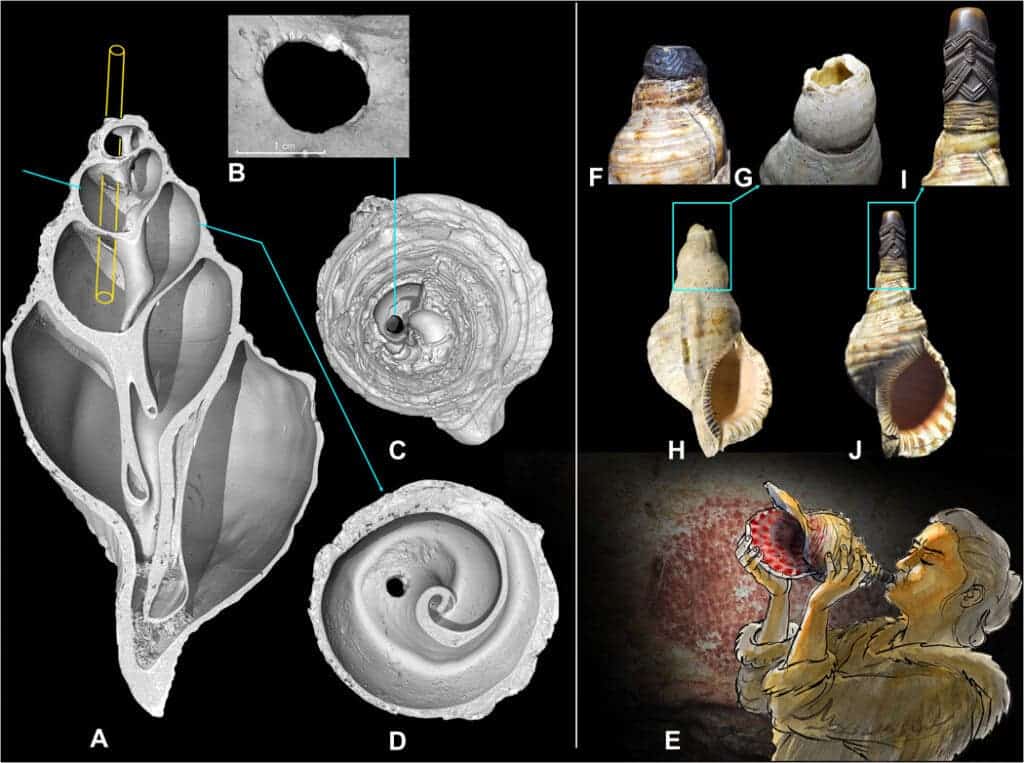
In 1931, archaeologists stumbled upon a 17,000-year-old conch shell in a richly decorated cave in the Pyrenees. For more than eight decades, the ancient artifact had been gathering dust in the storeroom of a French museum until it was re-examined by researchers. They found that the shell was drilled purposefully to turn the shell into a musical instrument. Remarkably, they even managed to play near-perfect instruments out of the horn, showing that it still works after all these years.
Hunter-gatherers of musical notes

Originally, the shell belonged to some living organism, perhaps a sea snail called Charonia lampas, judging from its characteristics. It measures 31 centimeters in length and 18 centimeters in width.
Initially, when excavators found the shell in the Marsoulas cave, which was adorned with all sorts of marvelous prehistoric art, they thought it must have served a ceremonial purpose as a fancy drinking cup.
In reality, the conch shell is a lot more interesting than meets the eye. When scientists at the French National Centre for Scientific Research re-analyzed the artifact, they identified deliberate modifications that enabled the production of sounds with musical pitch. Besides holes drilled at certain intervals, the artisan also removed the apex of the shell, as well as the outermost lip of the shell, enabling a player to insert their hands to modulate the sound.

Essentially, the modified conch shell is a musical horn, the oldest known instrument of its type. Only bone flutes have been retrieved from an earlier date.
When the researchers realized the shell’s true purpose, they enlisted a trained horn player to offer some feedback. The musician was able to play three clear notes, very close to C, D, and C#.
“We already know that prehistoric people transformed many shells into portable ornaments and that they thus attributed substantial corporal symbolism to them. This seashell horn, with its unique sonority, both deep and strong with an enduring reverberation, sheds light on a musical dimension until now unknown in the context of Upper Paleolithic societies,” the authors wrote in the journal Science Advances.
The inner part of the conch is decorated with red pigment of the same kind as that used on the fingerprint artworks on the walls of the cave. This means that the hunter-gather musician who originally used the conch must have also participated in the painting of the images on the walls — making this perhaps the earliest combination of music and illustrative art in history.









